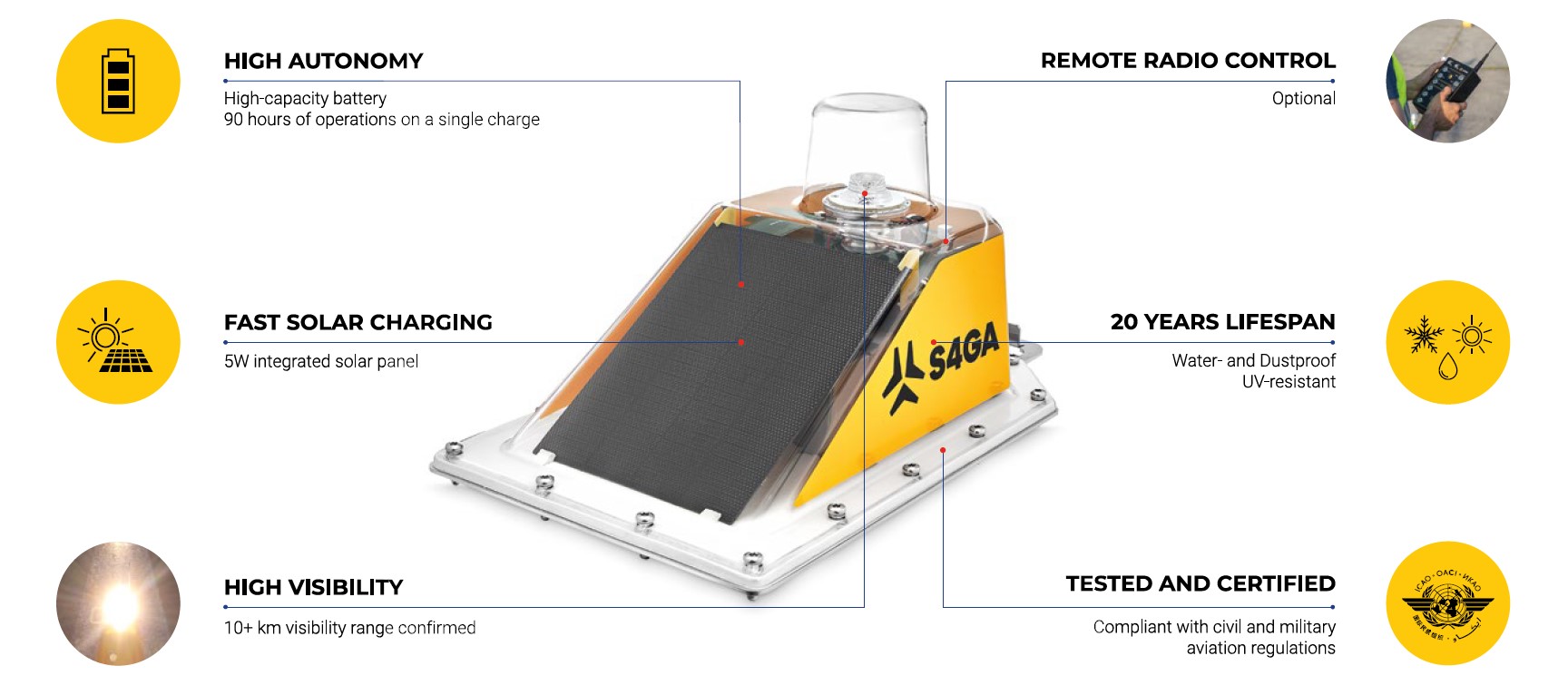



SP-102S solar taxiway light is blue taxiway light powered by solar energy and controlled remotely (optional). It is used to permanently illuminate airport taxiway in accordance with international aviation regulations. S4GA taxiway lights are designed for all types of taxiways at international airports and domestic airports.

S4GA Taxiway light is equipped with special LED optics, omnidirectional, that generates correct light output. The light has the highest visibility at a particular angle and does not blind a pilot. On the other hand, LED optics provides the correct blue color compliant with ICAO in terms of photometric and chromaticity. The light does not have a greenish or whitish tint.
 Taxiway is part of an airfield used by aircraft after exiting a runway. Taxiway leads to the hangar, apron, or terminal building. Airport taxiways usually have a concrete surface. However, small or medium-sized airports – usually regional and domestic airports – can be equipped with a grass taxiway.
Taxiway is part of an airfield used by aircraft after exiting a runway. Taxiway leads to the hangar, apron, or terminal building. Airport taxiways usually have a concrete surface. However, small or medium-sized airports – usually regional and domestic airports – can be equipped with a grass taxiway.
It is required that taxiways should be illuminated with taxiway lights if used at night. Simple taxiways are illuminated with elevated blue taxiway edge lights. At big international airports with advanced airfield infrastructure, taxiway lighting consists of edge lights, centerline lights, clearance bar lights, runway guard lights and stop bar lights. Each type is of a different color. The color of the taxiway light conveys information to a pilot.
Taxiway Edge Lights are the key element of taxiway lighting. These are blue lights set out on the edges of a taxiway. Taxiway edge lights can be elevated and inset type.
Traditionally, taxiway lights are powered by a 6.6Amp electrical grid. For temporary taxiways, battery-powered portable taxiway lights can be used.
Taxiways can be also illuminated with solar lamps. Such lights are equipped with LED lightbulbs to provide proper light intensity. In the meantime, the lifespan of LED taxiway lights is much higher than that of halogen lamps. LED lifespan is up to 100.000 hours!
Some time ago solar lighting was used as a temporary solution for airfields or as backup airport lighting. Today the situation changed – more and more airports are going solar. It also applies to airfield ground lighting. Solar airfield lighting is becoming a standard permanent lighting system for regional and domestic airports all over the World. The installation is quite simple – no groundwork, and no wire installation is required. Maintenance cost is less than 5% of the cost of AGL itself. The lamps work wirelessly using mesh network. Solar airfield lighting is remotely operated from airport TWR via ALCMS Airport Lighting Control and Monitoring System. The lightbulbs used in solar airfield lights meet ICAO requirements in terms of light intensity, light photometric, and light chromaticity.